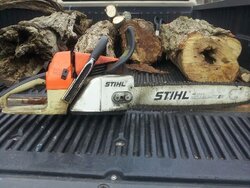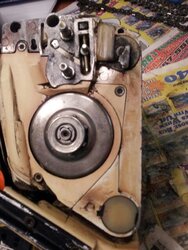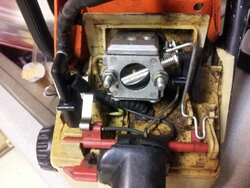Hey Guys,
Listen straight to the point: I've gotten 3 different opinions ranging from 1 shops saying all you need is, "New or Rebuilt Carb" and 1 shop saying "crankshaft seals & the last shop saying you need "crankshaft bearings".

What is the best method for detecting shot crankshaft bearings and seals?
Is splitting the case the only method for repair?
I can handle the carb situation...I guess. :reading:
If I can't advance beyond my current chainsaw learning/repair curve...I might as well give up on chasing down all these 0lder series Stihl saws (044, 064,etc) altogether and perhaps cash in what I've got.
The Stihl shops in my area whine & dread to see me coming with them...and it's getting too freaking frustrating for me.
Thanks,
Reg


Listen straight to the point: I've gotten 3 different opinions ranging from 1 shops saying all you need is, "New or Rebuilt Carb" and 1 shop saying "crankshaft seals & the last shop saying you need "crankshaft bearings".


What is the best method for detecting shot crankshaft bearings and seals?
Is splitting the case the only method for repair?
I can handle the carb situation...I guess. :reading:
If I can't advance beyond my current chainsaw learning/repair curve...I might as well give up on chasing down all these 0lder series Stihl saws (044, 064,etc) altogether and perhaps cash in what I've got.
The Stihl shops in my area whine & dread to see me coming with them...and it's getting too freaking frustrating for me.
Thanks,
Reg







